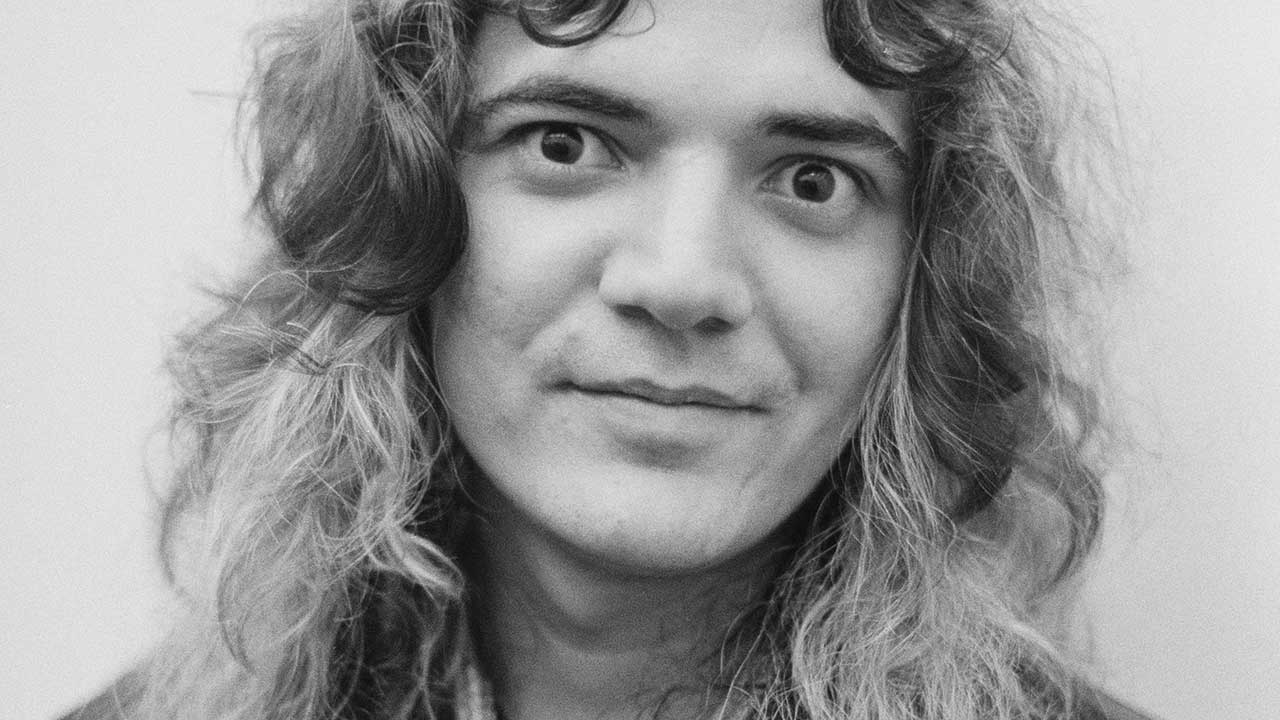The early 1970s was a great time for guitar heroes. Ritchie Blackmore, Jimmy Page, Eric Clapton and their peers were at the top of their game, but most adhered to a style rooted in the blues. Moreover, in the wake of Jimi Hendrix’s death, almost all the six-string gods came from England.
American Tommy Bolin, a native of Sioux City, Iowa, was a notable exception. Best described as the David Bowie of the guitar, Bolin jumped from one playing style to the next – making each one his own, before quickly discarding it for the next.
Glenn Hughes, Bolin’s one-time bandmate in Deep Purple, agrees with this assessment. “Tommy was different, wasn’t he?” he says. “He had a very South American-flavoured, Brazilian, reggae-ish way of playing guitar; it wasn’t European. It was be-boppy, it was jazz, it was everything Deep Purple weren’t. He was a genius.”
Born on August 1, 1951, Tommy Bolin discovered rock’n’roll via Elvis Presley, and got his first guitar when he was 10. Although he did time with bands such as Denny & The Triumphs, Patch Of Blue and The Velairs, he became increasingly fed up with the going-nowhere local music scene. He told his parents he was moving to the then musical hotbed of Denver, Colorado.
As Bolin’s brother, Johnnie, recalls: “Mom and dad were behind him 100 per cent. I mean, to let a kid go hitchhike to Denver at 15, it’s not like they didn’t care, but he said: ‘That’s what I really want to do’. And my mom didn’t like the fact that they kept throwing him out of school because of his long hair.”
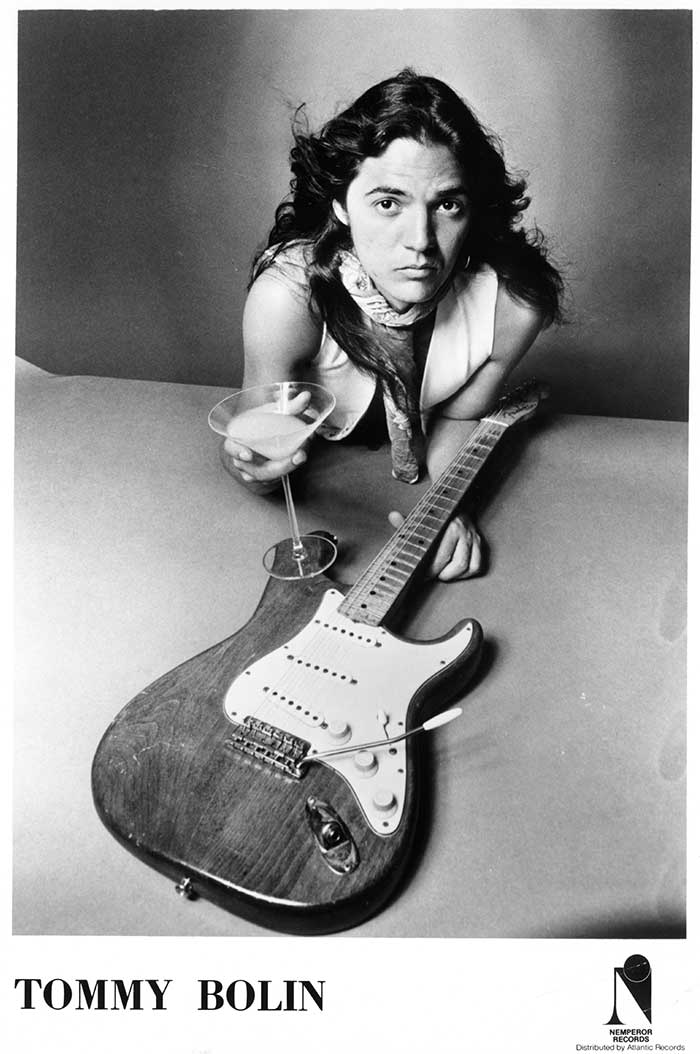
Shortly after arriving in Denver, Bolin met up with a singer called Jeff Cook and joined his band, Crosstown Bus. The two later formed American Standard. “Tommy was very humble about his gift, and he never made any of us feel that we weren’t as good as he was,” Cook recalls. “In that environment, we were able to grow, and become better players and better people.”
When Cook decided to relocate temporarily to England, Bolin looked elsewhere and hooked up with a band called Zephyr in 1968. But instead of showcasing the young guitarist’s talents, the group’s sound was based largely on singer Candy Givens’s Janis Joplin-like wailing. The group did give Bolin his first appearances on a major label, however, on 1969’s Zephyr and 1971’s Going Back To Colorado. Zephyr were signed to Probe, a subsidiary of ABC, and later moved to Warners.
But Bolin’s burgeoning love of jazz caused ructions within Zephyr. Taking drummer Bobby Berge along with him, he formed a new group called Energy. Based in Boulder, Colorado, the duo went through several musicians until they found a steady line-up, with Bolin’s old pal Jeff Cook on vocals, bassist Stanley Sheldon and keyboardist Tom Stephenson.
“It was an interesting time, because Boulder was a musical Mecca,” Sheldon says. “Joe Walsh had moved to town, Steve Stills was there. All these people were putting bands together.”
Despite the fertile local music scene, Energy found it difficult to gain a foothold. Sheldon: “Nobody really understood what we were doing. We were playing in a lot of bars and doing this instrumental fusion music, which no one out there had heard before.”
Energy stuck at it, and began to back many well-known artists who passed through town, including John Lee Hooker, Chuck Berry and Albert King. Also, it was during this time that Bolin discovered glam rock. His on-stage appearance became flashier: a gold lamé suit made by his long-time girlfriend Karen Ulibarri; multi-coloured hair; leopardskin platform boots. More seriously, this was also the era when Bolin’s love affair with hard drugs blossomed.
Sheldon: “The club owners back in Boulder used to pay us with coke. We’d do a gig for a week, and they’d give us like a quarter ounce. And then Tommy and I would go to everybody’s houses and portion it out to the players. Of course, our portions were enormous and everybody else’s were considerably smaller [laughs].”
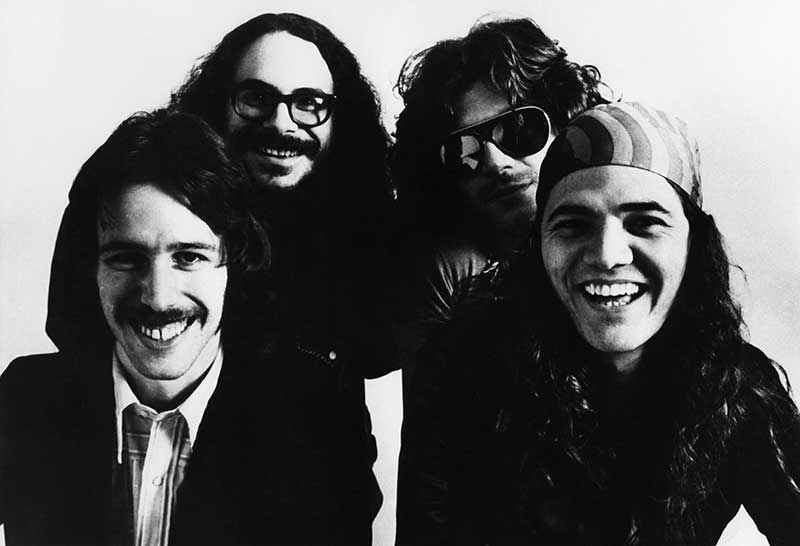
Sheldon recalls one particular episode, which sadly served as a sign of things to come for Bolin: “Tommy and I were always the romanticists, thinking heroin would be fun. I can remember we were up in Cheyenne, Wyoming. He had shot up, and he almost died right then. I stood there and watched him almost die; he went into convulsions. At that point, I knew that Tommy’s system was a little more susceptible to these things. He was only 20 years old at that point.”
With Energy still struggling to make an impact, one day Bolin received an unexpected visit. Sheldon: “I was in his apartment the day [Mahavishnu Orchestra drummer] Billy Cobham knocked on Tommy’s door, and invited him to play on the Spectrum album. Tommy had previously met Billy Cobham out in LA through Jan [Hammer, Mahavishnu Orchestra keyboard player]. The next thing I knew he was inviting Tommy to play on his new solo record.”
Cobham’s Spectrum album, which Bolin played on, helped launch the fusion boom of the early and mid-70s. According to drummer Carmine Appice, Bolin’s expert playing also inspired Jeff Beck on his future instrumental classics, 1975’s Blow By Blow and 1976’s Wired. “I was with Jeff in Beck, Bogert & Appice. We would listen to Mahavishnu Orchestra and the Billy Cobham album with Tommy on it. Jeff really liked the whole vibe of that jazz-rock mixture.”
- Jeff Beck, Joe Perry and All-Star Band triumph at Classic Rock Awards in Tokyo
- Deep Purple Albums Ranked From Worst To Best
- Sport: Glenn Hughes
- Tommy Bolin's Teaser gets deluxe vinyl treatment
While Cobham’s drumming and Jan Hammer’s keyboard virtuosity were extraordinary on Spectrum, it was Bolin’s fluid guitar playing – especially on the over-the-top jamfest Quadrant 4 – that had everyone talking. Soon, The James Gang came a-callin’.
Led by guitarist/singer Joe Walsh, The James Gang were a hard rockin’ outfit who had no problem filling out their music with only three players. When Walsh left the group at the height of their popularity, the rhythm section of bassist Dale Peters and drummer Jim Fox decided to soldier on, and expanded the group to a quartet with singer Roy Kenner and guitarist Domenic Troiano. After a pair of disappointing releases, Troiano left. At the suggestion of their old pal Walsh, Bolin was invited to saddle up and ride with The James Gang.
Peters recalls Bolin relocating to their home base of Cleveland, Ohio: “He was great. He just seemed like the right guy, played the right way – a spectacular guitar player. Tommy was actually relatively quiet, but the drug thing was hideous. He’d get up in the morning and take, like, 20 aspirins just to get going. When he was high he was great. But when he wasn’t he was just miserable.”
Despite Bolin’s growing chemical dependency, there’s no denying that the two albums The James Gang recorded with him, 1973’s Bang and 1974’s Miami, are among the group’s finest, and are arguably among the most underrated rock releases of the 70s. The group also let their newest member call the songwriting shots. But soon, The James Gang’s rather formulaic approach meant Bolin began to feel restricted. To his relief, he was invited by another respected jazz-fusion drummer, Alphonse Mouzon, to play on his third solo album, 1975’s Mind Transplant. Quite similar stylistically to Cobham’s Spectrum, Mind Transplant showed that Bolin had retained his love of jazz rock and his ability to shine in that musical sphere. His playing ignited such stand-out tracks as Nitroglycerin.
Having relocated to California, Bolin finally received what he had really wanted all along – the offer of a solo recording deal. But it didn’t stop there. Bolin received a phone call out of the blue, asking if he’d be interested in trying out for the job of guitarist with Deep Purple, which had just been vacated by Ritchie Blackmore.
Ex-Purple bassist Glenn Hughes recalls that Purple drummer Ian Paice “was a big Billy Cobham fan. I think he came up with [Tommy’s name]. He’d heard Spectrum, came over my house and played it for me, and [Purple vocalist David] Coverdale also heard it. We were blown away. I’ve always been interested in newer, cutting-edge artists, and I was also always into ‘the look’ as well – and Tommy looked bizarre.”
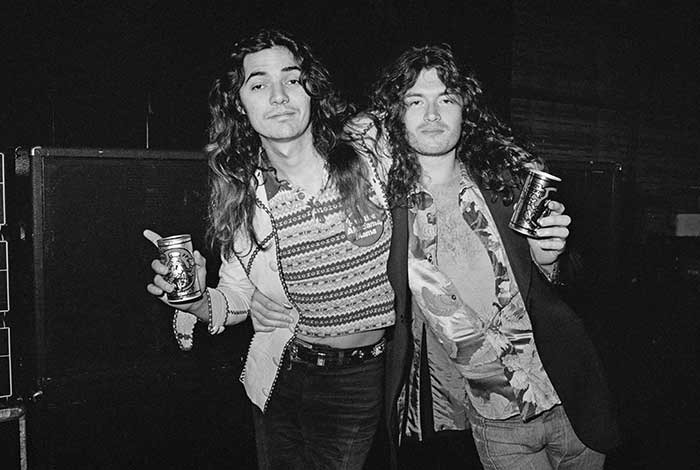
Bolin agreed to a tryout, which Hughes remembers fondly: “The first day, we were rehearsing at Pirate Sound [in LA]. We only auditioned two people, [Humble Pie’s] Clem Clempson and Tommy. Clem didn’t get the gig, but not because of his ability as a guitar player. It was because to fill Ritchie Blackmore’s boots you have to be a character. When Tommy walked in and I saw him, I shouted across the room: ‘Whatever happens, you’re coming home with me!’ We were just peas in the pod together.”
With his twin commitments as solo artist and band member now solidified, Bolin worked simultaneously on his solo debut Teaser, and his first (and, it turned out, only) studio album with Purple, Come Taste The Band, both released in late ’75. Also in 1975, he found time to play on the self-titled debut by Canadian Led Zeppelin clones Moxy. Brother Johnnie: “He did that because they paid him in coke. That’s all he remembered about it. He played good though – Tommy did the solos.”
Next on the agenda for Bolin was an intensive Deep Purple tour schedule. And it was during dates in Japan on that tour that Bolin’s new bandmates discovered his dangerous drug habit. Hughes: “Japan was a miss because he was given some morphine and he fell asleep on his hand. He twisted it and ruptured some tendons. So when he woke up we had to get him into therapy. But it didn’t do much good. His right hand was dead, so he couldn’t really play.
“We were very naïve and vulnerable to the fact that we didn’t know that Tommy was on opiates or heroin. He wasn’t on them all the time, but I can tell you that if he had the chance to get a sleeping pill, he would take it.”
While things improved for Purple during the US leg of their tour in early ’76, by the time they arrived in the UK in March it was becoming painfully evident that the group was finished. Hughes: “The shouts for Blackmore were overwhelming. And Tommy just could not deal with that. A young man growing musically, mentally, or spiritually couldn’t deal with that aspect. He basically gave everybody the finger, and he played below par.” Shortly afterwards, Deep Purple split.
With Bolin unable to tour properly in support of his Teaser solo album due to his commitments with Purple, the album never received the attention it deserved. With Purple now over, instead of trying to rekindle Teaser with some solo shows Bolin went into the studio to work on a follow-up, Private Eyes.
Carmine Appice remembers meeting up with Bolin around this time: “He was out of his tree. I know he was taking Quaaludes, cocaine, drinking – he took whatever they gave him.”
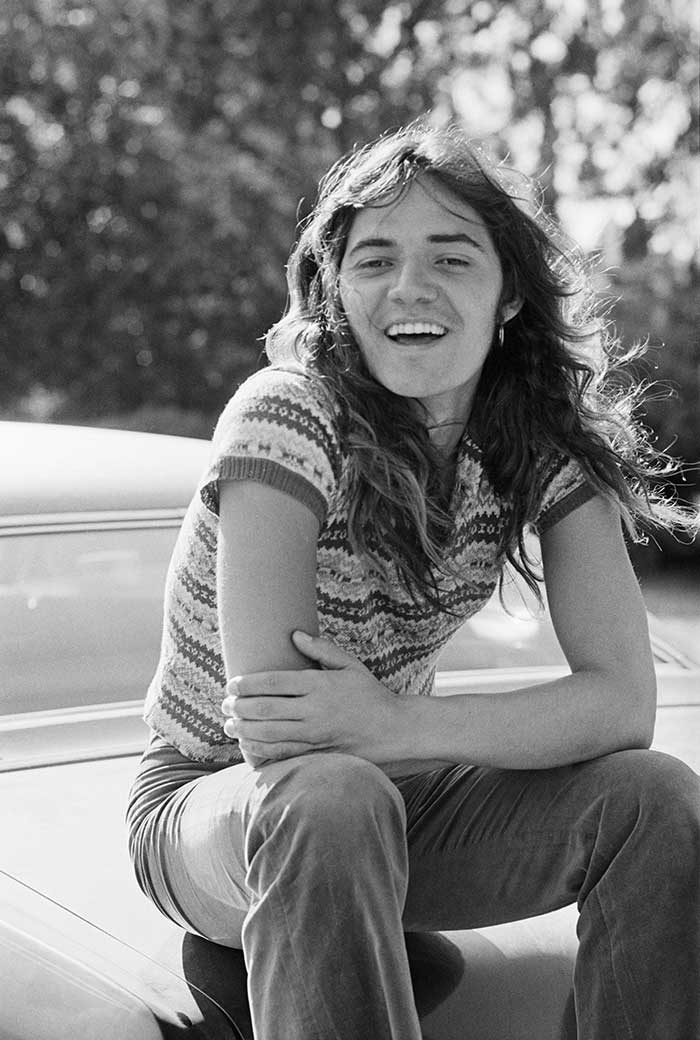
During the summer of 1976, Tommy invited his brother Johnnie to play drums in his solo band. One of Johnnie’s first gigs was at the enormous Mile High Stadium in Denver, at a festival that also included Steve Miller and Peter Frampton. Ex-Energy bassist Stanley Sheldon was in Frampton’s band, which was riding an enormous wave of success created by Frampton Comes Alive. Sheldon was surprised by Bolin’s reaction after the pair met backstage: “Tommy was crying. I remember that he was just so upset that he wasn’t the headliner – I think it was really getting to him at that point. I mean, he was happy for me, but he was just a little frustrated. And definitely way too high.”
Despite Deep Purple having ended, Hughes and Bolin’s friendship continued. A few months after the split, the two of them attended an advance showing of Led Zeppelin’s concert film The Song Remains The Same in Los Angeles in September. “I actually had an argument with him – the last time I saw him, we actually rolled around the floor of the Beverly Hilton Hotel,” Hughes remembers. “I was mad at him because he had left his girlfriend [Karen Ulibarri]. There was a rumour going around that he was on the needle.”
Soon after, Hughes and Ulibarri became an item themselves. They married a year later.
With 1976 almost at a close, Bolin’s plan was to finish the tour in support of Private Eyes, opening for Jeff Beck, before starting work on his next release, supposedly a more R&B-based affair, to be called I Got To Dance. But Bolin’s lifestyle finally took its ultimate toll on him in the early hours of December 4, 1976.
Bolin and his band had just performed a strong set at the Jai Alai Auditorium in Miami, Florida. Afterwards, Bolin’s bass player Jimmy Haslip left him backstage, offering some advice. “I told him to be careful,” he recalls.
Haslip retraces the events of that fateful night: “When I left, I heard that there was an entourage of people that ended up in Tommy’s hotel room, and there was some partying going on. And that’s when, from what I understand, there was a major problem. Tommy passed out and, basically, his body was being deprived of oxygen for some reason. He was turning blue.
“Supposedly, right away somebody wanted to call 911, but this guy who was sent out to be Tommy’s babysitter put a halt to that, and said: ‘I’ll take care of him.’ The guy was an ex-Marine drill sergeant. He probably had skills in saving people’s lives – the skills that a paramedic might know. If you bring in an ambulance with paramedics, that’s going to bring a lot of publicity. So maybe he was trying to protect Tommy from any kind of strange publicity like that, trying to revive him on his own.
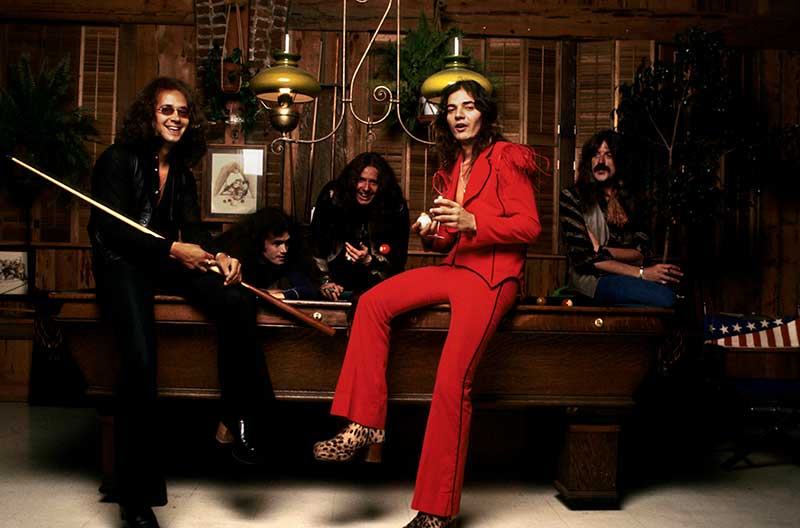
“They supposedly threw him in the tub and started pouring cold water over him to try to bring him back into consciousness. From what I understood, his colour came back and he was breathing fairly normally. Then they got him into bed and he started turning blue again. And I think at that point in time they did call 911. But by then it was too late, and when the paramedics got there they could not bring Tommy back.”
Tommy Bolin, gifted and with so much potential, died from a heroin overdose, at the age of just 25.
Since his death, a sizeable cult following has developed, thanks in part of such organisations as the Deep Purple Appreciation Society and the Tommy Bolin Archives (the latter has released CDs of concert and demo recordings since the mid-90s). Additionally, his brother Johnnie organises annual Tommy Bolin Tribute shows. Geffen Records released the two-disc Bolin box set, The Ultimate, in 1989. Mötley Crüe’s cover of Bolin’s song Teaser has appeared on several compilations over the years.
As a result, interest in Tommy’s music continues, as evidenced by Private Eyes finally receiving gold certification in the US in October 2000. Johnnie worked with producer Greg Hampton to release Whips And Roses in 2006, two volumes of newly discovered, pro-recorded out-takes from the Teaser and Private Eyes sessions.
Looking back today, his friend and one-time Purple bandmate Glenn Hughes suggests that had the guitarist lived, he would have certainly gone on to blur musical boundaries further. “Tommy Bolin today? I don’t know if he’d have been playing an electric guitar. He would have definitely gone on further than most. Tommy would have been really avant garde. Probably wouldn’t have gone mainstream; Tommy would have been your Jeff Buckley of the axe.
"He shined brightly, and he was way ahead of his time. He was my brother and I miss him tremendously.”
